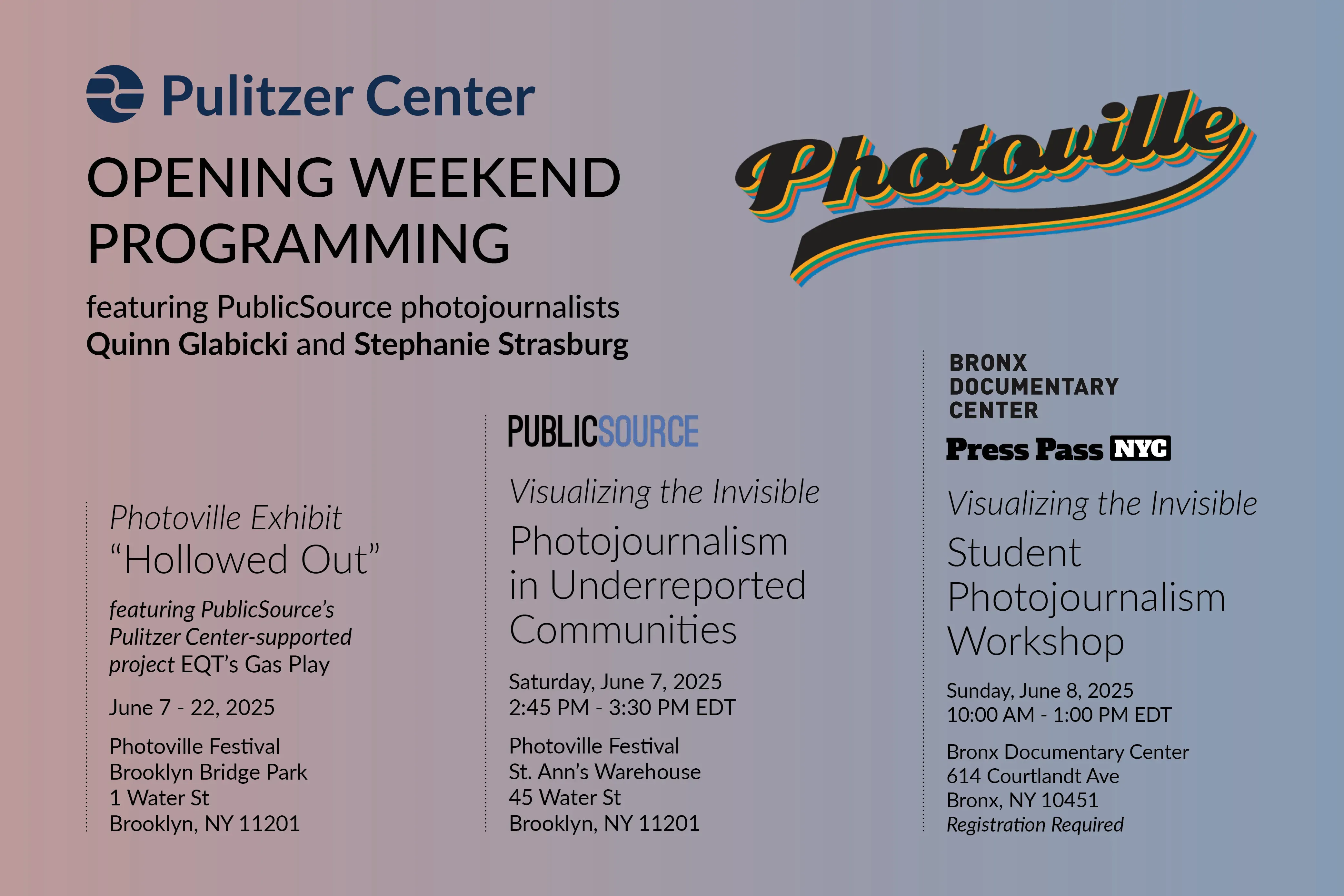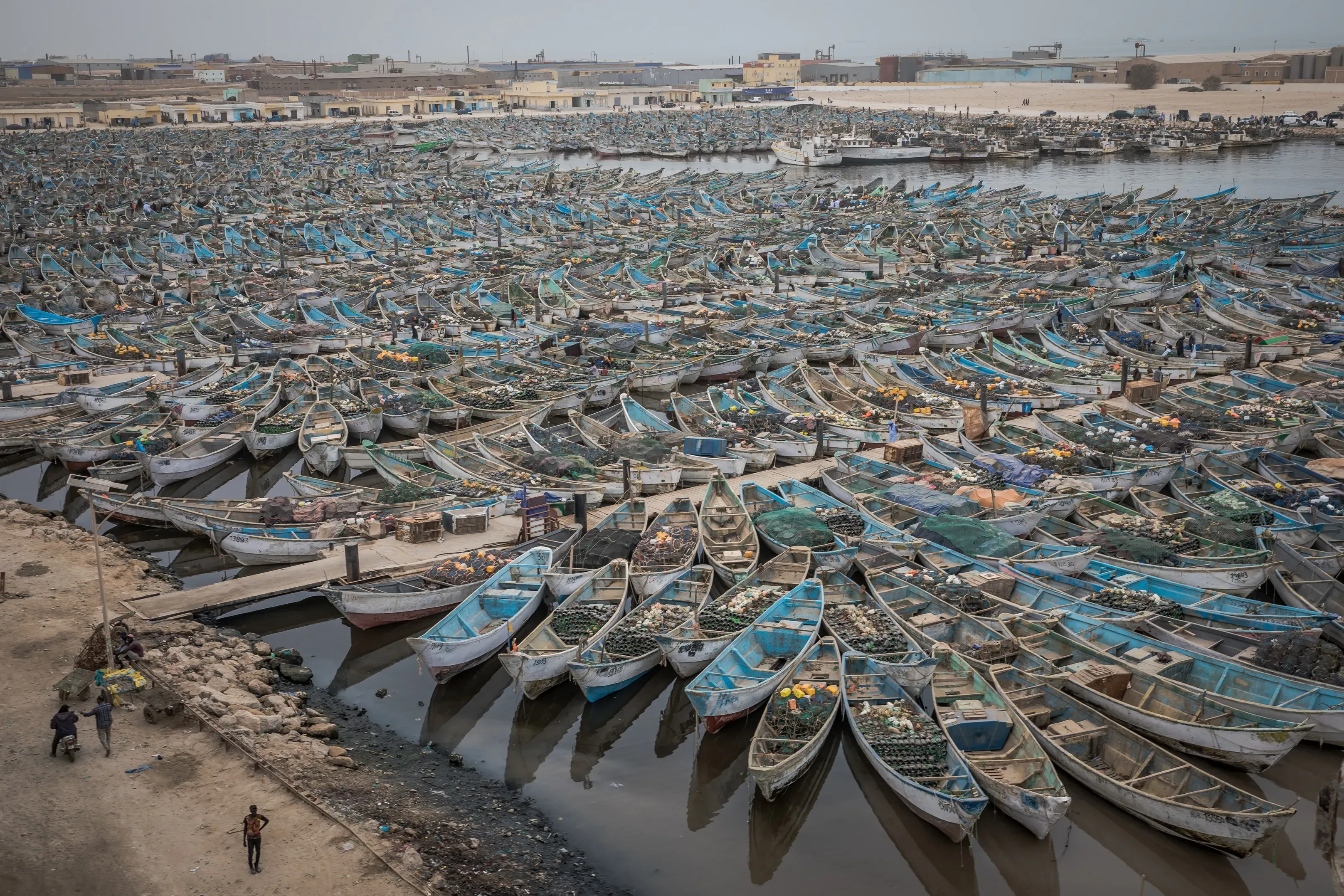
Pulitzer Center Returns to Photoville With Exhibit, Panel, Workshop in NYC
While Pittsburgh gas giant EQT Corporation touts its gas exports as “the largest green initiative on the planet,” abandoned homes and poisoned wells are left in its wake across rural Appalachia.
This June, we’re excited to partner with Photoville for our 11th year to exhibit Hollowed Out, which features PublicSource reporter and photographer Quinn Glabicki’s investigation into the environmental and human fallout of America’s largest fracked gas producer.
The project documented families who abandoned their homes in West Virginia after experiencing years of ongoing symptoms consistent with exposure to the chemical compounds released by EQT's operations nearby, as well as residents in Pennsylvania who reported painful rashes and years of undrinkable groundwater after a “frack-out” sent fluid and gas erupting down Main Street.
“These issues exist everywhere at some scale. It’s almost expected: illness in proximity to industry,” Glabicki said. “How do we document this banality of horror?”
Glabicki spotlighted the human cost of fracking by weaving portraits of families with stills of packed-up dolls, pages of resident notebooks chronicling health symptoms, air quality complaint investigation forms, and thermal imaging revealing invisible hydrocarbon emissions. Connecting local stories with environmental testing and records created an indisputable public record—one that residents cited when they filed a class-action lawsuit demanding clean water from EQT.
Glabicki’s moving storytelling emerges from countless hours spent earning trust, listening closely, and documenting the quiet details that bring these personal stories to life. During Photoville’s opening weekend, we’re hosting two sessions to dive into documentary photography’s unique ability to capture these stories of resilience and injustice—and empower change.
Our panel with Photoville on Saturday, June 7, will feature PublicSource photojournalists Glabicki and Stephanie Strasburg exploring how photographers humanize today’s issues by building trust with subjects for more personal stories. On Sunday, June 8, we’re hosting a workshop for high school students with Press Pass NYC at the Bronx Documentary Center. Glabicki and Strasburg will share their approaches to finding untold visual stories, and then students will practice taking their own images to capture a story in their community.
Our exhibit, and many more, are free and open to the public from June 7 to 22 in Brooklyn Bridge Park in New York City. For New York communities with their own legacies of industrialism and environmental injustice, these Appalachian stories will feel remarkably familiar.
Best,

Impact
The Pulitzer Center-supported project Poisoned Ports, by Chris Burrell, was announced as Region 10 winner for Best News Series in the Edward R. Murrow Awards. Regional winners advance to the national competition, which will be announced in August. Poisoned Ports examines the rise in shipping traffic in coastal communities across the U.S., the activists striving to mitigate its pollution and health effects, and possible clean energy solutions.
In response to the award, Burrell says, “I truly couldn't have executed this—at the level we did—without help. Pulitzer [Center] support bolstered me in my newsroom, which was a little skeptical about me pushing to look at other states. [The Pulitzer Center was] really flexible and highly responsive. Thank you.”
Find more climate reporting across the United States’ coastlines here.
Photo of the Week

“When we started the story on the overfishing of octopus in Mauritania with commitments from newspapers in four countries, we had no idea that it would spread … We shouldn’t have been surprised, for the main character, the octopus itself, sparked real emotion in us: a human connection to perhaps a somewhat alien intelligence, the honesty of reporting [that] when we ate octopus in a Spanish factory the spicy taste turned to ash, to shame. This, we believe, is why the story gained traction—for in the story the reader could see both the octopus and herself.”
— Nathalie Bertrams
This message first appeared in the May 30, 2025, edition of the Pulitzer Center's weekly newsletter. Subscribe today.
Click here to read the full newsletter.









